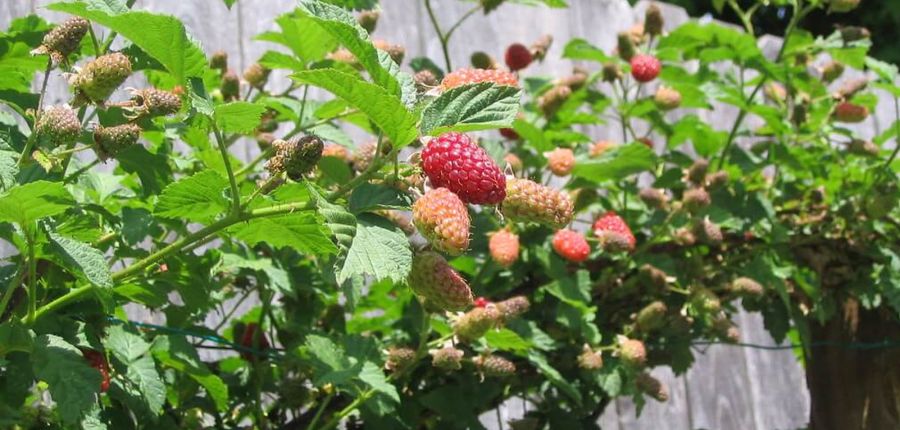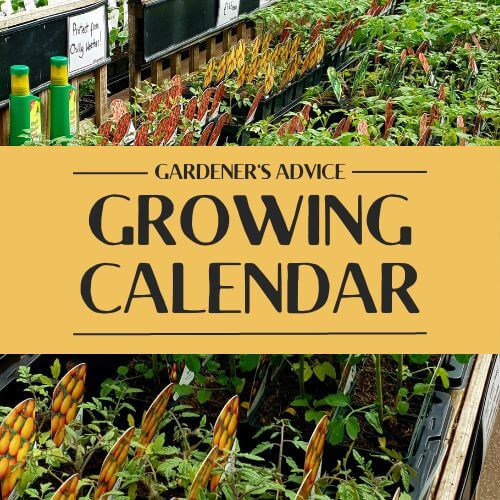Spectacular Loganberry and Tayberry plants
Posted By: rocket veg Category: Plant Care, Seasonal AdviceMy magnificent loganberry, a beast of a plant, finally finished fruiting at the end of July. It has been a wonderful year for all kinds of soft fruit, helped by lots of warm sun and welcome rain to boost growth and plump up the berries
Logan and tayberries are long-established examples of hybrid soft fruit plants, bred to get the best of two or more varieties of existing species. Both were created by crossing specific varieties of blackberry and raspberry, loganberry named after an American horticulturalist and lawyer, James Harvey Logan, whereas the tayberry takes its name from the River Tay in Scotland, a country well-regarded for producing excellent species of raspberry due to the excellent soil and temperate climate.
I have both species growing on my allotment, a thornless loganberry of dramatic proportions which spans a complete bed when it’s at the height of glory in mid-summer; and a tayberry which although less vigorous in habit is covered with a myriad of tiny, needle-sharp thorns. The fruit of both plants is delicious, a real summer treat when eaten with cream or as part of a summer pudding. It also makes wonderful, though slightly pippy, jam.
Once the season is over, the long stems quickly turn brown and the leaves wither and fall. It’s a sad sight, but all is not lost - for while all this has been going on, the plant has been busy producing shoots around the base and these quickly grow into long, stems which will bear next season’s crop of fruit and therefore need treating with care.
How to grow and train a loganberry
Late autumn and early winter are the best times to plant both types, but not when the soil is frozen. There are quite a few varieties of each, so do a bit of research and select one which best suits your requirements in terms of eventual height and spread, as well as with or without thorns. You may be lucky enough to obtain a ‘logan’ or ‘tay’ from a tip rooting someone has pulled up, which is how I acquired my tayberry. Choose a sunny spot and as with most plants, before planting, dig plenty of well-rotted manure or rich compost into the soil so that the plant gets off to a strong start.
Both species need space to stretch their out their long shoots, so allow a span of at least 4m (12 feet), either planting in the middle and training the shoots in both directions, or plant at the end and tie all the shoots along the same way, alternating higher or lower along the support each year.
A loganberry plant will need to be grown on strong frame – sturdy uprights, such as timber posts, 2m above ground and a metre or so apart, with wires or canes on which the stems can be tied so that they run from side to side. I planted my loganberry in the middle of the framework and spread the stems out in both directions, but it’s fine for the plant to be at one end with the stems all going one way. The new shoots begin to appear from the base of the plant in May and once I spot them, I do my best to tie them out of the way of the way on a temporary basis so as to allow the fruit to ripen on what are now the old stems.
My tayberry straggles along a wire fence, but I have constructed a frame consisting of four tall (1.8m above ground), sturdy posts to which I have tied a couple of rows of long canes using cable ties. Use soft twine when tying in the new shoots.
Pruning
Pruning is a straightforward matter, as long as you follow the basic principle of cutting out the stems (just above the ground) which produced fruit that season, then tying in the new shoots to allow them space and support to develop and fruit the following year. If this sounds complicated, I can assure you that it is isn’t: once fruited, the old stems and their leaves quickly begin to discolour, thereby identifying themselves for cutting.
Once done, have fun tying the new stems to the framework using soft garden twine, spacing the stems to allow light and air to reach the fruit when it begins to develop next spring. If this sounds complicated, don’t be put off: like all plants which need pruning to encourage fruiting or flowering, it’s simply a case of sticking to plan, asking others for advice if need be.
Which loganberry to grow
Bearing in mind the eventual size of a loganberry and the manner in which it has to be pruned and trained, I recommend planting a thornless variety - LY654 being most dependable. If you have an allotment, there is bound to be someone on the site who has a loganberry and might give you a shoot which has rooted in the soil. Once planted, it takes two seasons for a loganberry to reach maturity and produce its first crop of luscious, deep pink fruit – the perfect filling for a Pavlova or turned into coulis for loganberry semifreddo, or made into wonderful jam. Maybe don’t bother and simply pop the berries into your mouth while picking!







